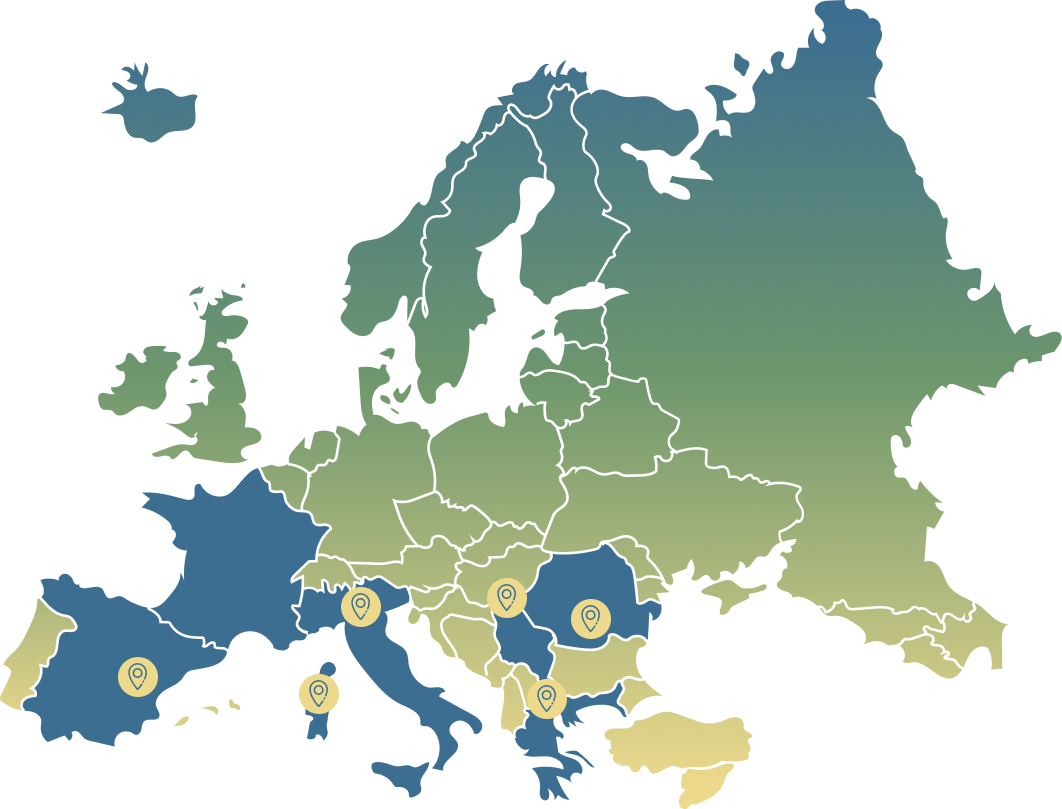
Maremma, Italy
Maremma, located in central-western Italy along the Tyrrhenian coast, is a marginal area in gently rolling countryside that has been degraded by past intensive farming practices, resulting in soil erosion, loss of organic matter, and reduced fertility. Its semi-arid climate, limited irrigation, and susceptibility to drought pose challenges for conventional agriculture. However, the area offers strong potential for recovery through sustainable approaches focused on soil regeneration, biodiversity, and carbon sequestration.
Nurra, Italy
Nurra, a region in northwestern Sardinia, has a long agricultural tradition, with past cultivation of cereals, olives, and vegetables. In recent years, however, it has been affected by land abandonment and rural depopulation, leading to overgrowth by weeds and invasive species. Introducing low-input oil crops like cardoon can play an important role in restoring soil health and reviving agricultural use of the land.
Vojvodina province, Serbia
The Vojvodina province in Serbia has strong agricultural potential thanks to its favourable climate, fertile soils, and abundant water resources. However, this potential remains underused, prompting national and local authorities to prioritise agriculture as a key area for development. In this context, intercropping safflower with cereal crops offers an opportunity to improve soil organic matter and reduce the effects of climate change. The site will also be used to test new rapeseed genotypes.
South Muntenia, Romania
The South-Muntenia Region is Romania’s largest agricultural area, covering nearly 18% of the country’s farmland and producing around 19% of its total maize crop. However, it is also one of the regions most vulnerable to climate change, with significant impacts already observed on crop yields, particularly maize. In this context, intercropping safflower with cereals could be a valuable practice for local farmers, helping to reduce climate-related risks and improve soil organic matter.
Valencia, Spain
The Valencian region is experiencing challenges typical of the wider Mediterranean area, including rising temperatures, water scarcity, and frequent droughts, all of which pose serious threats to local agriculture. Over the next decade, climate change and the planned shift of an additional 33% of farmland to drip irrigation are expected to significantly affect the region’s water balance. In this context, intercropping safflower with cereal crops could offer a promising solution for farmers in Valencia, helping to reduce the impact of drought and improve crop resilience.
Thessaly, Kozani, Aitoloakarnania, Greece
Three pilot sites in Greece have been selected to test the cultivation of oil crops under challenging conditions. Two of them, in Thessaly and Aitoloakarnania, are classified as marginal lands due to natural limitations. The site in Thessaly is dry and has very low organic matter (1%), while the site in Aitoloakarnania is affected by soil salinity. The third site, located in Kozani (northwest Greece), is a former lignite mining area with high levels of nickel contamination, around ten times above the legal limit.

